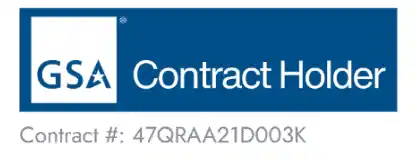How to read your pay stub
“How to read your pay stub” is easy-read guide to help you learn everything you need to know about the information presented in your pay stub each pay period. That includes:
- The difference between a pay stub and a check
- Gross pay vs net pay
- What taxes are withheld, and why
….. and much much more. Furthermore, even if you have the basics of reading your pay stub down, this ultimate guide can be your key to making sure all the right deductions are made from your check.
Getting your first paycheck can be exciting, but getting your first pay stub can be anything but.
Unless you have a background in Human Resources or payroll, figuring how to read your pay stub isn’t always easy.
In fact, it can be downright intimidating if you don’t know where to look and what you’re looking for.
If you’re struggling to understand just what exactly each figure on your pay stub is trying to tell you, check out our comprehensive guide on how to read your pay stub.
Paycheck vs. pay stub— Is there a difference?
You might even be sitting there wondering, “is there a difference of a paycheck vs. a pay stub?”
The answer is yes.
A paycheck is an actual check that you can present to your bank and have deposited in your account.
A pay stub, on the other hand, is a document— which sometimes comes attached to the check— that summarizes the amounts of the check and gives other necessary information such as deductions.
As direct deposit continues to become the more popular mode of pay, you’re less likely to get a paper copy of your pay stub since you won’t receive a physical check.
More frequently, you’ll receive an email with a link that will provide the same details you’d see on a physical copy of a pay stub.
How to read your pay stub: gross pay vs. net pay
One of the real secrets to how to read your pay stub is knowing what distinguishes your gross pay from your net pay.
Without understanding the difference, you’ll struggle to get the full picture of what your pay stub is telling you.
In short, gross pay is the amount of money you’re paid BEFORE taxes. Net pay (also called “take-home pay”) is what remains after all deductions have been taken out.
How is this information critical to understanding how to read your pay stub?
Here’s how:
Both your gross pay and net pay are listed on your pay stub. Gross pay is also a line item that will be listed on your W2, so it’s important to keep tabs on this number.
For more information about completing your W2 & box 12 codes, check out this free guide.
On your pay stub, your gross salary will be broken down into wages you’ve earned for the pay period.
This can vary based on how many hours you’ve worked, including any over time, and whether or not there’s been a change in your pay, but on most pay stubs this amount should stay relatively stable.
The breakdown:
Your gross pay is calculated using your regular hourly rate, plus any overtime (typically paid at a time and a half).
While pay stub organization can vary based on the employer, you’ll usually find a breakdown of your gross pay looks something like this:
The number of regular hours worked x your hourly rate = gross pay.
You want to keep an eye on your gross pay to make sure that your net pay is calculated accurately.
From your gross pay, deductions are made. What’s left over is your net pay.
Deductions can include everything from taxes to health care and retirement costs (more on that later).
Here’s a simple way to know how to read your pay stub when it comes to net pay:
Number of hours regularly worked x hourly rate — amount withheld for ALL deductions= net pay
But how do you determine what deductions are being made from your check? And for what purpose?
Keep reading to find out.
Determining the tax withheld from your check
If you work full time then taxes are withheld from your paycheck each pay period.
While that may not be a thought that makes you giddy with glee, knowing what taxes are being cut from your check, and why, can help you better assess your exemptions.
There are several taxes that can show up on your pay stub. Some are the sole responsibility of the employee. Others are paid by the employer.
They are:
|
Employee Taxes |
Employer Taxes |
|---|---|
|
Federal Income Tax (FIT) |
|
|
State Income Tax (SIT) |
Federal Unemployment Tax (FUTA) |
|
State Disability Insurance (SDI) |
State Unemployment Tax (SUTA) |
|
Social Security |
Social Security |
|
Medicare |
Medicare |
Taxes applied to employees
Federal Income Tax (FIT): Federal Income Taxes are taxes that are taken out of your earnings by the IRS. You typically elect your exemptions when you complete a W-4, and then based off your tax bracket, a specified percentage is deducted from your check.
In the U.S. there are seven income tax brackets you can fall into:
10 percent, 15 percent, 25 percent, 28 percent, 33 percent, 35 percent, and 39.6 percent.
State Income Tax (SIT): Similar to FIT, state income taxes are taken out of your check at a state level.
State Disability Insurance (SDI): This particular tax, which gives people covered under it the benefit of wage replacement in the form of disability insurance and paid family leave, is only applicable in certain states such as California.
Taxes paid by employers
Federal Unemployment Tax (FUTA): This is a tax paid by the employer. Basically put, FUTA (along with state unemployment programs) funds unemployment payments and provides compensation to those workers who’ve been laid-off. While the FUTA tax rate is 6 percent, most employers qualify for a tax break of 5.4 percent.
State Unemployment Tax (SUTA): Similar to its federal counterpart, SUTA is also paid by the employer. It offers a type of unemployment insurance to workers who have lost their jobs.
Shared taxes, W2s and box 12 codes
Social Security: Social security is a federally mandated program, which helps finance retirement. As an employee, you will contribute 6.2 percent to this fund. Likewise, employers will also contribute 6.2 percent.
Medicare: Medicare provides assistance with medical payments for those who have hit retirement. As an employee, 1.45 percent of your wages go toward this tax. Employers also pay 1.45 percent.
Remember, if you make additional wages during the year (such as tips), uncollected social security and Medicare taxes should be listed on your among W2 and box 12 codes.
Above all, keep in mind that different states may also have their own local taxes (or tax breaks) applied to income.
While you may not always see the FUTA and SUTA tax reflected on your pay stub, you will definitely see SIT, FIT social security and medicare listed. Usually, you’ll find these together under the “deductions” section of your pay stub.
Understanding benefit deductions
Now that you have an idea of the tax deductions listed on your pay stub, it’s time to take a look at the other deductions you’re likely to see.
While each employee will see the same taxes applied to their paycheck, other deductions can vary among employees.
These discrepancies occur in light of the programs that employees participate in.
Check out the list below for an idea of what benefits are pulled from your paycheck.
Benefits and deductions on your pay stub
- Health Insurance: The amount you pay for health benefits will vary based on the number of dependents you’ve claimed and what health care programs you’ve selected. However, the benefit of participating in these types of plans is that they are pulled from your check pre-tax, meaning they are not subject to the same taxes your wages are. They include:
- Vision
- Dental
- Health Care
- Flexible Spending Account
- Life Insurance: Again, this is another area where the amount deducted from your paycheck depends on the type of plan you have, your age and health. For that reason, plans rates range anywhere from $300/ year to $900/ year or more depending on these variables.
- Retirement Plans: Contributions you make to any retirement accounts through your employer will also show up on your pay stub. Similarly, these contributions will vary based on your income and the percentage you’ve elected to contribute. Some basic plan types offered through your employer may include:
- 401(K)
- 403(B)
- Government 457
Need more information about taxes and retirement? Check out these tax-effective retirement strategies.
Employers may match the contributions made to your FSA account or retirement plan. Because all employers are different, some of these amounts may show up on your pay stub while others don’t. For example, while you may see employer FSA contributions listed on your pay stub, you may not see those made to your retirement accounts.
Other deductions you may see
Of course, there are also other deductions you made need to know in order to know how to read your pay stub.
While this is in no way a comprehensive list (if you’d like to know more refer here), these are some of the more common deductions you might see:
- Wage garnishments: These are deductions that are made to pay off a debt. They include unpaid taxes, child support, alimony, default payments on student loans, etc.
- Union fringe deductions: Fringe benefits are taxable benefits that employees get, which include benefits an employee gets as a union laborer.
- Union dues: Furthermore, if you happen to be part of a union, then you probably pay dues or fees to that union. These will be deducted from your paycheck, which is also critical to knowing how to read your pay stub.
How time off adds to your pay stub
Time off is another factor that can impact how to read your pay stub.
Typically, personal time off (PTO) can be found listed in the same subsection as the hours you’ve worked, holiday and overtime.
Essentially, this particular section will show you what PTO hours you have available and how many hours you’ve used thus far in the year.
The representation of those hours may look something like this:
Hours available/ hours used year-to-date
When it comes to how to read your pay stub in terms of vacation days or time-off, this is a good number to keep your eye on. Since some employers follow the “use it or lose it” principle, this part of your pay stub can be critical in helping determine if you need to take time off.
Most of all, you can rely on this section of your pay stub to help you calculate your pay if you plan on taking an extended vacation from work.
Get to know the abbreviations
Part of the key to knowing how to read your pay stub is understanding what the abbreviations used stand for.
For that reason, we’ve provided a list of the most common abbreviations featured on pay stubs and their meaning.
- YTD: Year-to date, which is used to show your total income/ deduction thus far in the year
- SS or FICA: Social Security
- PTO: Personal Time Off
- FT or FWT: Federal Tax
- ST or SWT: State taxes
- MWT: Medicare tax withheld
Year-to-date summaries and tax exemptions
Although year-to-date summaries can seem useless, they can actually make a few of payroll tasks more hassle-free.
How?
Firstly, they can allow you to ballpark the amount of taxes you’re paying and determine if you’re paying enough. It’s possible that you’re claiming too many (or too few) tax exemptions.
Additionally, year-to-date summaries can help to make filling out W2 and box 12 codes so much easier because it will help you better conceptualize how much an employee made within the year as well as the amounts allocated to other benefits (retirement, insurance, etc.)
By now, you’ve hopefully got a better idea of how to read your pay stub. This information can also provide you a better look into how tax withholdings and exemptions work.






